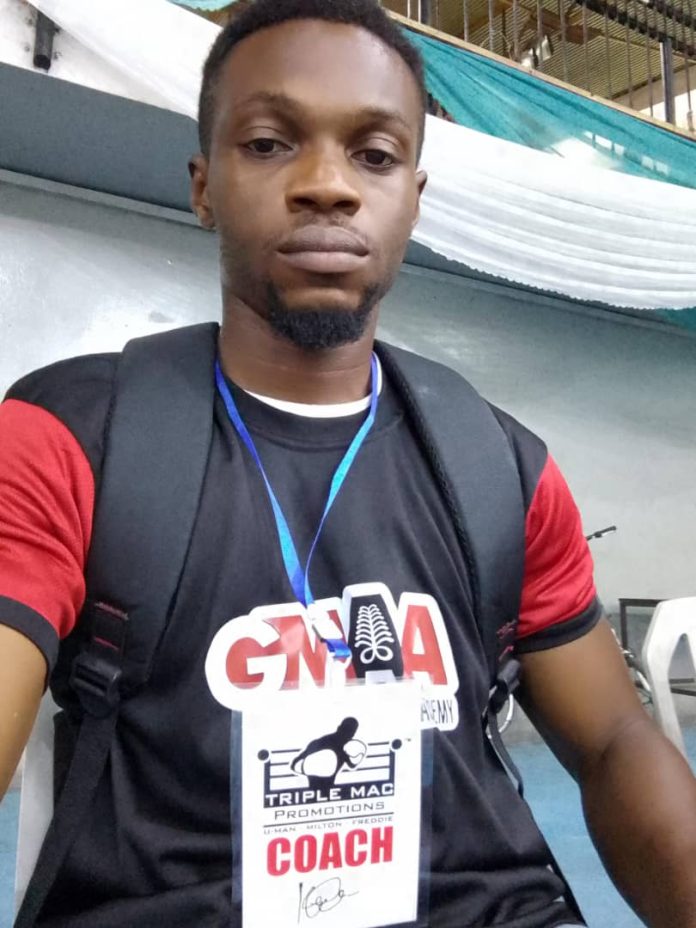
Many parents are hesitant to let their children participate in boxing due to safety concerns, yet they may inadvertently put their children at greater risk by hitting them on the head, as a means of discipline.
Corporal punishment, including spanking and hitting, has roots in various cultures as a means of instilling discipline and respect. This practice was often justified by the belief that physical pain would deter undesirable behavior. However, over the last few decades, a significant shift has occurred.
While many parents and educators historically relied on physical punishment to enforce discipline, modern scientific, psychological, and sociological insights have made it abundantly clear that such practices, particularly hitting children on the head, can have devastating consequences.
Many countries have banned corporal punishment in schools and homes, driven by mounting evidence of its harmful effects. These changes reflect a growing understanding that physical punishment may not lead to better-behaved children but rather to a host of negative outcomes.
The Delicate Anatomy of a Child’s Head
A child’s head and brain are extraordinarily delicate. Unlike adults, children have softer skulls and more pliable brain tissues. The brain continues to develop throughout childhood and adolescence, making it particularly susceptible to injury. The skull of a child is thinner and less capable of absorbing shocks, and the brain, being a soft and complex organ, can be easily damaged by even seemingly minor impacts.
Hitting a child on the head can lead to various types of injuries, ranging from mild concussions to severe traumatic brain injuries (TBIs). Concussions, although often considered mild, can have serious consequences. They can cause headaches, dizziness, confusion, and even long-term cognitive deficits. Repeated head injuries can lead to chronic traumatic encephalopathy (CTE), a progressive degenerative disease known to cause memory loss, confusion, impaired judgment, aggression, depression, and dementia.
Severe TBIs can result in permanent disabilities, affecting cognitive functions, motor skills, speech, and language. According to the Centers for Disease Control and Prevention (CDC), TBIs in children can lead to significant long-term health issues, including persistent headaches, learning disabilities, and emotional problems (CDC, 2020).
Psychological and Sociological Implications
The psychological impact of hitting children on the head is profound. Physical punishment instills fear, reduces self-esteem, and creates an environment of violence and distrust. Research indicates that children who experience physical punishment are more likely to develop anxiety, depression, and behavioral problems (Gershoff & Grogan-Kaylor, 2016). These children may also exhibit aggressive behavior, perpetuating a cycle of violence that affects their social interactions and future relationships.
From a sociological standpoint, corporal punishment, particularly hitting children on the head, is detrimental to societal health. It normalizes violence as a means of resolving conflicts and instilling discipline, which can lead to higher rates of violence and aggression in the community. Children who grow up in violent environments are more likely to perpetuate violence, creating a cycle that affects not just individual families but society as a whole.
Modern psychology and neuroscience strongly oppose hitting children on the head. Studies have consistently shown that non-violent disciplinary methods are more effective in promoting positive behavior and emotional well-being. The American Psychological Association (APA) advocates for positive discipline strategies that focus on reinforcing good behavior rather than punishing bad behavior (APA, 2019). These methods help build trust, respect, and healthy relationships between children and caregivers.
A Comparative Analysis of Boxing and Hitting Children on the Head
The most common methods of child discipline in Nigeria are knocking the head with a clenched fist, slapping with an open palm across the temple, slapping across the face or hitting the back of the head which can all predispose children to risks.
Comparing the points of impact in boxing with hitting children on the head as a disciplinary measure involves understanding biomechanical and physiological aspects, as well as the context of voluntary versus involuntary exposure to head trauma. From a perspective combining boxing coaching and sports science, let’s compare the points of impact on children’s heads to boxing knockout areas.
Points of Impact in Boxing
In boxing, the knockout areas of the head generally refer to specific anatomical targets where a well-placed punch can potentially result in a knockout or render an opponent unconscious. These areas include:
- Chin/Jawline:
Strikes to the chin and jawline are primary targets in boxing due to their vulnerability to rotational forces that can cause concussive effects and lead to knockouts (Smith et al., 2017).
Targeting the chin in boxing aims to disrupt the brain’s equilibrium, leading to a knockout. - Temple:
The temple is a critical target in boxing due to its proximity to major blood vessels and nerves, making it susceptible to knockout-inducing strikes (Smith et al., 2017).
Hits to this area can disrupt blood flow and neurological function, potentially leading to unconsciousness. - Rabbit Punch (Back of Head/Neck):
Strikes to the back of the head and neck are illegal in boxing due to its potential to cause severe injury to the cervical spine and brainstem (Rowson et al., 2012).
Strikes here can cause sudden rotational forces on the head and neck, risking spinal cord injury and immediate neurological impairment.
Hitting Children on the Head:
- Knocking the Head/Forehead:
Children’s skulls are not fully developed and are more susceptible to traumatic brain injury from impact (Blaine et al., 2019).
Direct blows to the head can cause concussions, brain bleeding, and long-term cognitive impairments due to weaker bone structure and less developed neck muscles for shock absorption. - Slapping the Temple:
The temple area in children is similarly vulnerable to impact as in adults, but with added risks due to their smaller size and lower tolerance to trauma (Blaine et al., 2019).
Strikes can disrupt blood flow and cause immediate unconsciousness or long-term neurological damage. - Slapping the Jaw/Chin:
Similar to adults, strikes to the jaw and chin can transmit forces that affect brainstem function, leading to knockout or injury (Blaine et al., 2019).
Children’s smaller bone structure and less developed musculature offer less protection against such impacts, increasing the risk of injury. - Slapping the Back of the Head: This is similar to the rabbit punch in boxing, hitting the back of the head can cause injury to the cervical spine, brainstem, and can lead to severe neurological damage.
Comparative Risk Analysis:
Boxers are elite athletes who undergo rigorous training to condition their bodies and minds for controlled impact. The athletes in boxing undergo conditioning to strengthen neck muscles and develop techniques to minimize the impact of blows. They also compete under strict regulations that limit exposure to dangerous techniques like the rabbit punch.
In contrast, children are smaller, less developed physically, and lack the training and protective measures that boxers have. Moreover children lack the physiological preparedness and protective measures seen in athletes. They are more vulnerable to serious injury from blows to the head, which can cause immediate and long-term harm.
Boxers also compete in similar weight categories and therefore trade commensurate impact forces while adults hitting children deliver significantly higher force relative to the child’s body size and strength. This increases the risk of serious injury.
Both boxing and hitting children on the head can lead to long-term neurological consequences. However, children are at a greater risk due to their developmental stage and the potential for cumulative harm from repeated impacts.
A Call to Action
As parents, coaches, educators, and caregivers, it is our responsibility to protect children from harm and promote their healthy development. Positive reinforcement, clear communication, and consistent, fair consequences are far more effective and humane methods of discipline.
Instead of resorting to physical punishment, there are healthier and more effective ways to discipline and guide children:
Positive Reinforcement: Reward good behavior with praise and positive attention. This encourages children to repeat desirable behaviors.
Time-Outs: A brief time-out can be an effective way to address undesirable behavior without causing physical harm. It gives the parent or teacher time to calm down and reflect on better methods of punishment without involving anger.
Communication: Open and honest communication is key. Explain to children why certain behaviors are unacceptable and discuss better ways to handle situations.
Modeling Behavior: Be a role model for the behavior you want to see in your children. Show them how to handle conflicts calmly and respectfully.
By educating ourselves and others about the severe risks associated with hitting children on the head, we can create safer, more nurturing environments.
Conclusion
From a boxing coach and sports scientist perspective, hitting children on the head poses greater risks of injury compared to boxing due to children’s developmental stage, lack of conditioning, and the disproportionate force applied by adults. This comparison underscores the need for non-violent disciplinary approaches to ensure children’s safety and well-being.
Protecting the physical and psychological integrity of our children is paramount. The actions we take today will shape their futures and the future of our society. Let us commit to ending harmful disciplinary practices and embracing methods that foster respect, understanding, and healthy development.
By spreading awareness and promoting safer, more effective disciplinary practices, we can safeguard our children’s futures and nurture a generation of healthy, well-adjusted individuals. The head is sacred.
Coach Oluwadare Bada is a Certified Boxing Coach (NIS) and Sports Psychologist. He is the Head Coach at Grace Martial Arts Academy Akure and currently a Higher Degree Student of the Exercise & Sports Science Programme, Department of Physiotherapy, University of Medical Science, Ondo.
Views expressed by contributors are strictly personal and not of Precision Online Newspaper.















